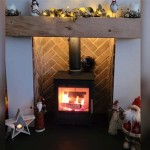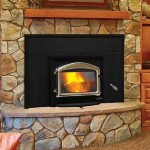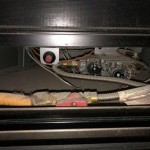How Do Ventless Gas Log Fireplaces Work?
Ventless gas log fireplaces offer a convenient and aesthetically pleasing heating solution for many homes. These appliances simulate the look and feel of a traditional wood-burning fireplace without requiring a chimney or venting system. Understanding how these systems operate is crucial for safe and effective use.
The core principle behind ventless gas log fireplaces revolves around complete combustion. They are engineered to burn fuel, either natural gas or propane, very efficiently, minimizing the production of harmful byproducts. The key to this efficiency lies in several design and operational features that carefully control airflow, gas flow, and burning temperature. This process ensures a relatively clean burn, producing primarily carbon dioxide and water vapor, which are released directly into the living space.
It's vital to understand that while ventless fireplaces are designed for efficient combustion, they do introduce small amounts of byproducts into the home. This is why ventless systems must adhere to strict safety standards and guidelines to ensure safe operation and to minimize the risk of indoor air quality issues.
Key Point 1: Catalytic Combustion and Oxygen Depletion Sensors
A crucial element in the operation of ventless gas log fireplaces is the use of a catalytic converter. This component facilitates the complete oxidation of the fuel, further reducing the emission of pollutants. As the combustion gases pass over the catalytic converter, unburned hydrocarbons and carbon monoxide are converted into carbon dioxide and water vapor. This process happens at a lower temperature than would typically be required, contributing to the overall efficiency of the fireplace.
Beyond the catalytic converter, ventless fireplaces are equipped with an Oxygen Depletion Sensor (ODS). This safety device constantly monitors the oxygen levels in the room. If the oxygen level drops below a certain threshold, indicating incomplete combustion and a potential buildup of carbon monoxide, the ODS will automatically shut off the fireplace. This feature is paramount for preventing carbon monoxide poisoning and ensuring safe operation in enclosed spaces. The location of the ODS is carefully considered during the design to accurately reflect the overall air quality in the room.
The ODS works by using a pilot light that heats a thermocouple. The thermocouple generates a small electrical current that keeps the main gas valve open. When the oxygen level drops, the pilot light weakens, cooling the thermocouple and reducing the electrical current. If the current falls below a specific level, the gas valve closes, shutting off the gas supply to the fireplace. This simple yet effective mechanism is a critical safety feature of all ventless gas log fireplaces.
Furthermore, the design of the burners and log arrangement is carefully engineered to promote optimal airflow and mixing of gas and air. This is essential for achieving complete combustion. The logs are typically made of ceramic materials that radiate heat effectively and enhance the aesthetic appeal of the fireplace. The specific design of the log set can influence the combustion efficiency and the overall heat output of the fireplace, therefore, it's important to only use log sets specifically designed and approved for the fireplace model.
Key Point 2: Installation and Ventilation Requirements
While ventless fireplaces do not require a chimney, they must be installed in a room of adequate size with sufficient ventilation. This is crucial to prevent the buildup of combustion byproducts and to ensure adequate oxygen levels. Local building codes and manufacturer's instructions specify the minimum room size and ventilation requirements for each model. Proper installation is essential for safe and efficient operation.
The general recommendation is to have at least 50 cubic feet of room volume for every 1,000 BTU/hour of fireplace input. For example, a 30,000 BTU/hour fireplace would require a room with at least 1,500 cubic feet of volume. This calculation helps to ensure that there is enough air in the room to support combustion and to dilute any combustion byproducts that are released.
Additionally, it is recommended that the room have a fresh air source, such as a slightly opened window or a door leading to another room. This will help to replenish the oxygen supply and to prevent the buildup of carbon dioxide and water vapor. While ventless fireplaces are designed to burn cleanly, they do release water vapor into the air, which can contribute to humidity levels. In some cases, excessive humidity can be a concern, particularly in homes with poor ventilation or moisture problems.
Improper installation or use can lead to unsafe conditions, including carbon monoxide poisoning, oxygen depletion, and excessive humidity. It is imperative to follow the manufacturer's instructions carefully and to have the fireplace installed by a qualified technician. Regular maintenance, including cleaning the burner and checking the ODS, is also essential for ensuring safe and efficient operation.
It is also important to note that ventless fireplaces are not suitable for all homes or situations. They should not be used in bedrooms, bathrooms, or other small, enclosed spaces. They should also not be used in homes with individuals who have respiratory problems, such as asthma or COPD. In these cases, a vented gas fireplace or an electric fireplace may be a better option.
Key Point 3: Safety Regulations and Certifications
Ventless gas log fireplaces are subject to stringent safety regulations and certification standards. These standards are designed to ensure that the fireplaces meet specific criteria for combustion efficiency, emissions, and safety features. Look for fireplaces that are certified by recognized organizations such as the American Gas Association (AGA) or Underwriters Laboratories (UL). Certification indicates that the fireplace has been tested and meets the required safety standards.
These certifications cover a range of aspects, including the fireplace's ability to maintain safe oxygen levels, to minimize carbon monoxide emissions, and to prevent gas leaks. The certification process involves rigorous testing and evaluation to ensure that the fireplace is safe to use and meets the required performance standards.
The American National Standards Institute (ANSI) also plays a crucial role in setting the standards for ventless gas log fireplaces. ANSI standards cover various aspects of the fireplace's design, construction, and performance. These standards are developed by industry experts and stakeholders to ensure that the fireplaces are safe, reliable, and efficient.
Furthermore, many states and local jurisdictions have their own regulations regarding the use of ventless gas log fireplaces. These regulations may include restrictions on the installation location, the maximum BTU output, and the required ventilation. It is essential to check with local authorities to ensure that the fireplace complies with all applicable regulations.
Regularly inspecting and maintaining the fireplace is crucial for ensuring its continued safe operation. This includes checking the burner for any debris or obstructions, inspecting the gas lines for leaks, and testing the ODS to ensure that it is functioning properly. Any signs of damage or malfunction should be addressed immediately by a qualified technician.
Choosing a certified ventless gas log fireplace and following all safety guidelines and regulations is crucial for ensuring a safe and comfortable heating experience. While these fireplaces offer a convenient and aesthetically pleasing alternative to traditional wood-burning fireplaces, it is essential to prioritize safety and to understand the principles behind their operation.

Vented Vs B Vent Direct Free Dixie S
.aspx?strip=all)
Ventless Fireplaces Explained Safety Of Vent Free Fires

Are Vent Free Gas Fireplaces Safe Ventless

Vented Vs Ventless Gas Fireplace Logs

How To Select And Install A Gas Fireplace Log Set Fireplaces Direct Learning Center

Vented Vs Ventless Gas Logs What S The Difference

What Is A Ventless Gas Fireplace Experts In Gaithersbutg Md

What You Need To Know About Gas Fireplace Logs Fireplaces Direct Learning Center
:max_bytes(150000):strip_icc()/ventless-gas-fireplaces-4160746-hero-f9d4bdcd9bd446eb84406de306f790ba.jpg?strip=all)
How To Pick Out A Ventless Gas Fireplace

A Ventless Gas Fireplace Doesn T Belong In Your Home Greenbuildingadvisor
Related Posts








